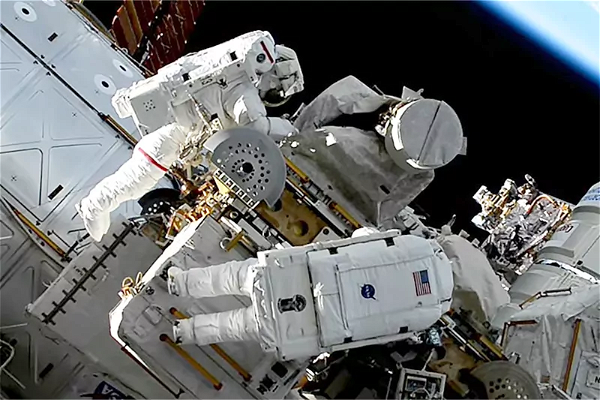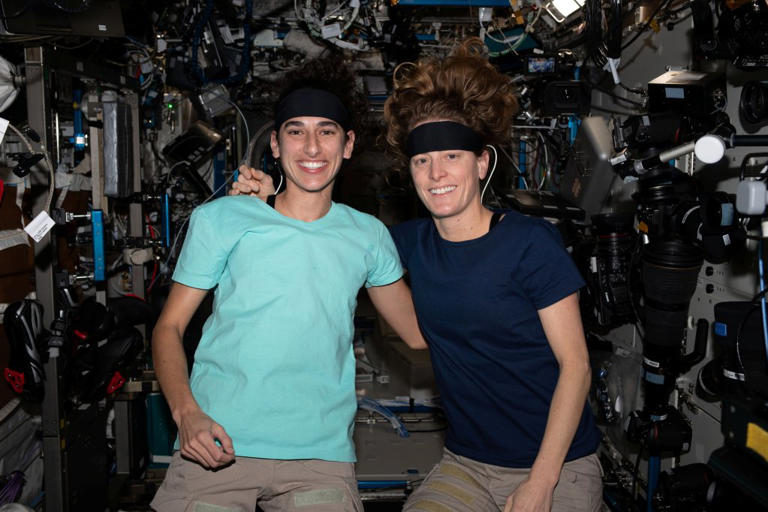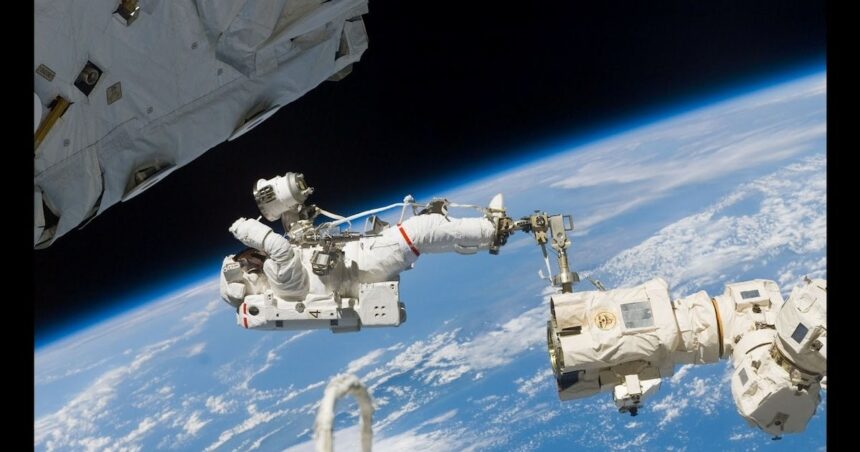In an unforeseen addition to the cosmic panorama, a bright tool bag is now gracing the space around Earth, joining the ranks of stars, planets, nebulas, and galaxies as a captivating target for skywatchers. This luminous tool bag made its accidental debut into space on November 2, 2023, slipping away from NASA astronauts Jasmin Moghbeli and Loral O’Hara during a spacewalk outside the International Space Station (ISS).

Orbiting just ahead of the ISS, this tool bag, officially known as a crew lock bag, boasts a visual magnitude of around 6, slightly dimmer than Uranus, making it visible to skywatchers equipped with binoculars. To catch a glimpse, enthusiasts are advised to track the ISS over the next few months, with the tool bag floating two to four minutes ahead of the station. As it descends rapidly, the bag is anticipated to disintegrate at an altitude of approximately 70 miles (113 kilometers) above Earth.
ESA reserve astronaut Meganne Christian shared footage of the tool bag’s escape on her X account, noting its last sighting by Crew-7 astronaut Satoshi Furukawa high above Mount Fuji. Harvard Center for Astrophysics astronomer Jonathan McDowell disclosed that the bag follows a roughly 258 by 258 mile (415 by 416 kilometer) orbit, earning its unique categorization in the U.S. Space Force cataloging system as 58229 / 1998–067WC.


This lost tool bag now joins the diverse array of artificial space debris encircling Earth, from shuttle fragments to astronaut-used tools. Notably, this isn’t the first instance of a tool bag reaching orbit; in 2008, NASA astronaut Heide Stefanyshyn-Piper lost grip of a tool bag during an ISS solar panel repair mission.
In the realm of peculiar objects in orbit, a spatula holds a unique distinction. In 2006, late NASA astronaut Piers Sellers unintentionally released a kitchen implement during the space shuttle Discovery’s flight STS-121, humorously remarking, “That was my favorite spatula. Don’t tell the other spatulas,” acknowledging the unusual loss.

As this tool bag becomes a temporary celestial traveler, its luminosity adds a surprising twist to the vast expanse of Earth’s orbit, captivating skywatchers worldwide.








